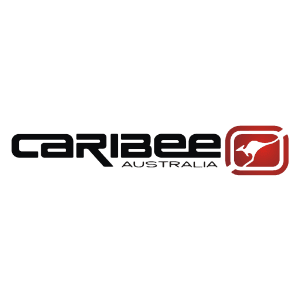Floors
Look for durable, waterproof floors. You might want to purchase an additional footprint or tarp. Footprints are designed to go under your tent and act as an additional layer of protection.
We’re reader-supported and may be paid when you visit links to partner sites. We don’t compare all products in the market, but we’re working on it!


If you're looking for a tent that's easy to use, durable and well designed, then Caribee is the brand for you. Recommended by 100% of those polled, it took out this year's best tent brand award.
If you’re looking for a tent for your next camping trip, you have several styles to choose from. Each type is suited to different activities.
Check out descriptions of some of the most common styles below:
When searching for a tent, look for something that is user-friendly, big enough for your group and is suited to the weather you’ll be camping in.
To get started finding your perfect tent, consider the following questions:
One of the most important, and often overlooked, factors when choosing a tent is how easy it is to set up. Try setting up the tent in the store or at home before you take it on a trip to make sure you know what goes where.
Tent size is measured by the number of people who can sleep in the tent. Specifically, this measures the number of sleeping bags that can fit on the floor and does not include any additional gear. If you want to be able to move around comfortably, choose one that has a sleeping capacity one size up from the number of people who will actually be sleeping in it. If you plan to spend a lot of time in the tent or fill your pack with handy gear, you should choose one that sleeps two or three more people than you actually have.
Tents are rated by the number of seasons it can withstand while keeping you dry and relatively warm. Typically, tents that can withstand extreme weather conditions are more expensive and heavier because they have more layers.
| Suitable seasons | Description | |
|---|---|---|
| Two-season |
| These tents are lightweight but offer less protection against the elements. While they are suitable for Spring and Summer, you may need an extra tarp if you use one during heavy rain. |
| Three-season |
| These are the most popular type available in Australia. They are relatively light and can stand up to heavy rain better than two-season tents. |
| Four-season |
| These tents work all year round. They are heavier and more expensive than two-season models because they are more durable. While they work well in cold climates, they sometimes feel hot and stuffy in hot weather. |
| Five-season |
| Five-season tents are designed for cold weather and high-altitudes. If you camp during snowstorms, five-season models are the way to go, but if you just need protection from the Sydney winter they’re not worth the money. |
Hopefully, you’ve found a tent that is easy to use, roomy enough for your party and gear, and suited to the weather you’ll be camping in. Next, check if it includes these extra details:
Look for durable, waterproof floors. You might want to purchase an additional footprint or tarp. Footprints are designed to go under your tent and act as an additional layer of protection.
You will want a door that is easy to get in and out of. If there will be multiple people in the tent, look for one with doors on two sides so that you won't have to climb over each other to enter and exit.
While doors provide some ventilation, additional windows and vents can help you keep cool in humid Australian weather.
A fly is an additional layer that sits above the tent and gets pegged into the ground. The fly acts as a waterproof layer and the space between it and the tent provides additional insulation. A quality model should come with a durable fly.
Some tents have vestibules or awnings that give you additional space to store gear and move around while still being undercover from light rain and sunshine. Make sure you put a tarp down under the vestibule or awning to keep the area from getting muddy.
Look for a tent bag that has extra room when your tent is rolled up inside. This will make it easier to store your tent when it is wet or when you don't have enough time or space to roll it up perfectly.
Metal pegs are more durable than plastic pegs and less likely to blow away in the wind.
Look for poles that are made out of a durable, lightweight and flexible material such as aluminium or carbon fibre.
Internal pockets give you more storage inside your tent and more floor space. However, pockets are not usually designed for heavy items.
Leaky seams can completely ruin a camping trip. Look for seams that are fully sealed with durable stitching.
Skylights and sunroofs can add additional ventilation while giving you a chance to stargaze when you lie down at night.
Check how long the warranty lasts and if there are any conditions that may void the warranty.
| Total Score | Overall rating | Value for Money | Design | Durability | Ease of use | |
|---|---|---|---|---|---|---|
| Caribee | 8.33 | 4.54 | 4.15 | 4.62 | 4.54 | 4.46 |
| Other | 8.24 | 4.42 | 4.74 | 4.47 | 4.42 | 4.32 |
| Kathmandu | 8.07 | 4.45 | 4.25 | 4.4 | 4.35 | 4.1 |
| BlackWolf | 7.9 | 4.5 | 4.25 | 4.42 | 4.33 | 4.08 |
| Coleman | 7.88 | 4.3 | 4.12 | 4.34 | 4.18 | 4.26 |
| Oztrail | 7.86 | 4.33 | 3.93 | 4.19 | 4.19 | 4.14 |
| Adventure Kings | 7.71 | 4.15 | 4.11 | 4.3 | 4.11 | 4.04 |
| OzTent | 7.4 | 4.04 | 4.17 | 4 | 4.13 | 4.13 |
| Kmart | 7.03 | 3.76 | 4.1 | 3.76 | 3.68 | 4.16 |
| Spinifex | 6.89 | 3.8 | 3.73 | 3.6 | 3.53 | 3.67 |
| Burke & Wills | 6.88 | 3.71 | 4 | 3.86 | 4.43 | 3.86 |
| Macpac | 6.87 | 4 | 3.83 | 3.67 | 3.67 | 3.58 |

If you’re searching for a pop-up tent, we can help you find the perfect option for your needs.
These are the six best rooftop tents you can buy right now in Australia.
From the best 1-person option to the top lightweight model, these are the 9 best hiking tents you can buy right now in Australia.
If you call the great outdoors home, or have your first overnight camp stay coming up, then this guide is your A-Z for where to get your next tent.